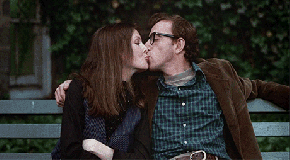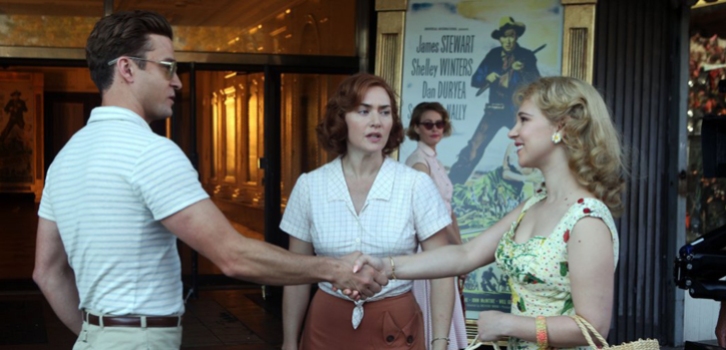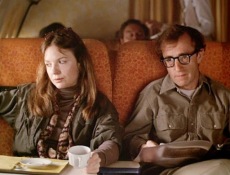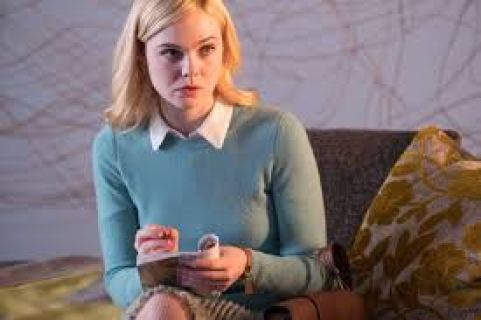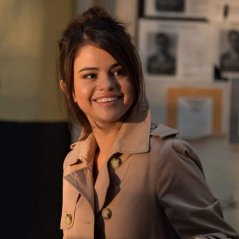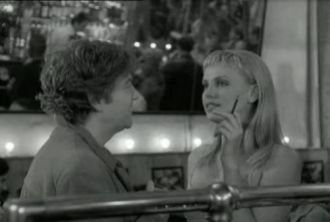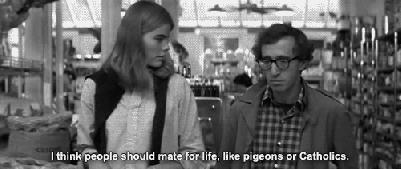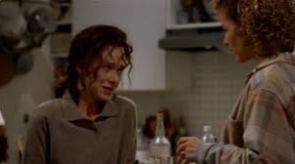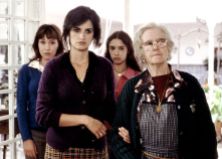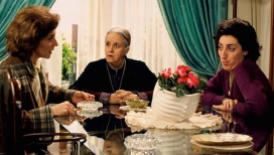
Yep. You’ve read the title correctly. Let me start by saying that I love Scorsese, I love De Niro, I love Al Pacino, and I love Joe Pesci. The performances in The Irishman are all stunning. The Irishman is a masterpiece, yes, but a masterpiece with a big moustache and a big beard.
Let me clarify that I really dislike those women who preach hate towards men. I am a mother of three wonderful children (two girls and a boy) and I don’t like those women who treat men like enemies. I also find it absurd to talk about female directors and male directors instead of just directors, or about female nominees and male nominees instead of just nominees (any way, who cares about the nominee thing: cinema is an art, not a competition!). I’ve always loved that touching and breathtaking scene in Guess Who’s Coming to Dinner where John Prentice (Sidney Poitier) says to his father (Roy Glenn):
“Dad, you’re my father. I’m your son. I love you. I always have and I always will. But you think of yourself as a colored man. I think of myself as a man.”
I, too, think of myself as a human being, not as a female human being. But this inability of the vast majority of cinema directors of embracing the women universe bothers me, bores me and saddens me.
So, what happened to Scorsese? Why The Irishman, being a cinematic masterpiece as it is, left me indifferent and impassible? Because in my opinion it’s a film about men made for men, where women are left in a corner, almost transparent, like ghosts.
I understand that Scorsese wanted to focus on the lives of Frank Sheeran, Jimmy Hoffa, and Russell Bufalino (rough characters masterly played by De Niro, Al Pacino, and Joe Pesci). But those men didn’t grow up on trees like apples. They had mothers, daughters, and wives who influenced them, supported them, embraced them, loved them, and hated them.
Frank Sheeran had two wives: Mary Sheeran (Aleksa Palladino in The Irishman -does she speak even once?) and Irene Sheeran (Stephanie Kurtzuba in the film), and four daughters: MatyAnne (Tess Price and Jennifer Mudge in the film), Dolores (India Ennenga and Marin Ireland), Peggy (Lucy Gallina and Anna Paquin), and Connie (Jordyn DiNatale and Kate Arrington) -which may mumble all together 10 words at most during the whole movie.
Jimmy Hoffa’s wife was Josephine Pozyswak (Welker White in the film). They were married 39 years (until Hoffa’s disappearance) and had a daughter: Barbara Ann (Rebecca Faulkenberry) -and a son: James Phillip (Ken Wulf Clark).
Bufalino’s wife was Carrie Sciandra (Kathrine Narducci in the film), who belonged to the Sciandra mafia family. Russell Bufalino and Carrie Sciandra were married more than 70 years (70 years!) and had no children.
But all those women hardly have a voice in the film. The only interesting female character in The Irishman is Peggy. All the other women in the film are almost superfluous: they remain almost silent and their bonds with the male characters are hardly drawn.
I must say that the music in The Irishman (Robbie Robertson) and the cinematography (Rodrigo Prieto) are absolutely stunning.
I understand that The Irishman is a film about the mob. And the mob is mainly male. But in The Godfather trilogy Coppola manages to deliver three films with truly interesting and strong female characters played by stunning actresses (Keaton, Talia Shire, Morgana King, Simonetta Stefanelli, Francesca De Sapio, and Sofia Coppola) while its male characters and brilliant actors shine enormously (Brando, Al Pacino, John Cazale, James Caan, Robert Duvall, De Niro, Lee Strasberg, Michael V. Gazzo, Gastone Moschin, Bruno Kirby, Dominic Chianese, Andy Garcia, Joe Mantegna, Eli Wallach, Donal Donnelly, and Franc D’Ambrosio). The Godfather trilogy is also a movie that revolves around men but there you have many female voices that make the story much more attractive and real.

Most of the films of today (and in cinema history) revolve around men and leave women in the corner. Some brilliant exceptions to this rule are Woody Allen’s films, Bergman’s films, Almodóvar’s films, and… who else’s films?
Woody’s films have always had women’s thoughts and feelings in their core. Woody is probably the director who has written the best and most interesting roles for women. I’m a huge fan of Woody’s and I love all his films. He carves the women of his films brilliantly and shows them with all their anxieties, fears, doubts, complexities, aspirations, and dreams. Woody is an amazing writer and his female characters don’t need capes or superpowers: they are women made from flesh and bones, full of love and hate. Some of the most iconic female characters in the history of cinema appear in Woody’s films. Annie Hall (1977), Interiors (1978), Manhattan (1979), Hannah And Her Sisters (1986), September (1987), Another Woman (1988), Alice (1990), Husbands and Wives (1992), Manhattan Murder Mystery (1993), Mighty Aphrodite (1995), Celebrity (1998), Small Time Crooks (2000), The Curse of the Jade Scorpion (2001), Anything Else (2003), Melinda and Melinda (2004), Match Point (2005), Vicky Cristina Barcelona (2008), Blue Jasmine (2013), Wonder Wheel (2017), and A Rainy Day in New York (2019) are all films with fascinating, deep, funny, complex, and real women. Woody said that it was Keaton who inspired him to start writing about women. So, thank you so much, Diane!
Bergman was one of the first cinema directors who created a powerful yet anguishing women universe. Bergman’s female characters are mostly dark: they suffer and agonize, but they also dream and long for love, peace and communication. Bergman also wrote super interesting male characters (Victor Sjöström, Max von Sydow, Gunnar Björnstrand, Erland Josephson, and Jarl Kulle all incarnated fascinating men). I used to love Bergman. Now I only enjoy his comedies. His dramas are too depressing and torturous for me now. Some of the deepest female characters ever written in cinema are the heroines in Sommaren med Monika (1953), Sommarnattens leende (Smiles of a Summer Night) –my favorite! (1955), Såsom i en spegel (Through a Glass Darkly, 1961), Persona (1966), Viskningar och rop (Cries & Whispers, 1972), Scener ur ett äktenskap (Scenes from a Marriage, 1974), Ansikte mot ansikte (Face to Face, 1976), and Höstsonaten (Autumn Sonata, 1978).
Almost all of Almodóvar’s films revolve around women. Almodóvar’s writing is funny, sad, deep and very real. I always think that you have to be Spanish to fully understand Almodóvar’s characters and jokes. He didn’t invent anything. He just copies the hysteria, poetry, strength and anger of the Spanish women. Mujeres al borde de un ataque de nervios (1988), Átame (1989), Tacones lejanos (1991), La flor de mi secreto (1995), Todo sobre mi madre (1999), Hable con ella (2002), Volver (2006), Los abrazos rotos (2009), and Julieta (2016) all show real women struggling, enjoying, and suffering.
Woody, Bergman and Almodóvar all have/had their muses. Woody’s muses include Keaton (the best! 9 films), Mia Fucker (sorry, I’m afraid she earned that name after her shameful vengeful persistent campaign against Woody: sadly, 13 films), Dianne Wiest (5 films), Julie Kavner (8 films), Judy Davis (5 films), Caroline Aaron (4 films), Louise Lasser (4 films), Stephanie Roth Haberle (4 films), Blythe Danner (3 films), Frances Conroy (3 films), Scarlett Johansson (3 films), Erica Leerhsen (3 films), Claire Bloom (2 films), Mariel Hemingway (2 films), Anjelica Huston (2 films), Joanna Gleason (2 films), Jessica Harper (2 films), Elaine Stritch (2 films), Janet Margolin (2 films), Debra Messing (2 films), Alison Pill (2 films), Sally Hawkins (2 films), Penélope Cruz (2 films), Parker Posey (2 films), Charlize Theron (2 films), Tracey Ullman (2 films), and Emma Stone (2 films).
Bergman’s muses were Liv Ullmann, Bibi Andersson, Ingrid Thulin, Harriet Andersson, and Eva Dahlbeck. Some critics argue that Bergman didn’t make stars of his own actresses, but that these stunning actresses made Bergman’s films so great.
Almodóvar’s muses include Victoria Abril, Carmen Maura, Cecilia Roth, Julieta Serrano, Marisa Paredes, Rossy de Palma, Penélope Cruz, Lola Dueñas, Kiti Mánver, Loles León, and Chus Lampreave. Almodóvar’s universe is unthinkable without all these delightful actresses.
Scorsese, on the contrary, only had male muses (funny, that word –male muse– doesn’t even exist!): Harvey Keitel, De Niro, Joe Pesci, and Leo. This is great, good for him, I don’t have any problem with that, I actually love it, but, in my opinion, this often makes his films lack that necessary women’s breath. And that’s, again, the problem with The Irishman. Scorsese’s universe is clearly masculine. I don’t mean that there are no women in his films, there are, yes, of course, but those women hardly speak, hardly exist. The women in Scorsese’s films are (as Sartre would say) contingent and not necessary. Iris (Jodie Foster), Betsy (Cybill Shepherd), Ginger (Sharon Stone), Karen (Lorraine Bracco), Danielle (Juliette Lewis), Jenny (Cameron Diaz), Isabelle (Chloë Grace Moretz), and Naomi Lapaglia (Margot Robbie) are all attached to male characters. They mostly represent men’s desires and fantasies and hardly exist in a world or their own.







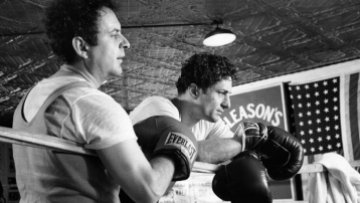




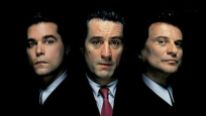







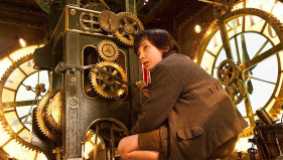
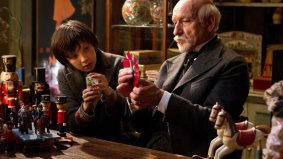






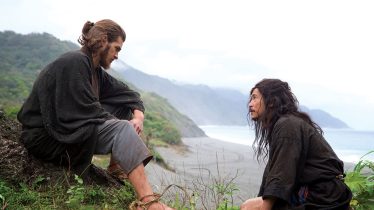

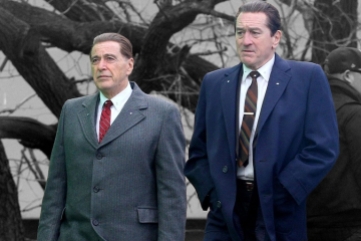



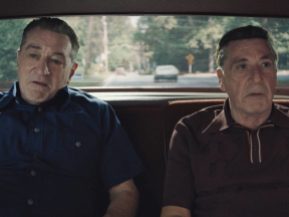
Scorsese’s most famous films revolve around men. Mean Streets (1973), Taxi Driver (1976), Raging Bull (1980), The Color of Money (1986), The Last Temptation of Christ (1988), Goodfellas (1990), Cape Fear (1991), Casino (1995), Gangs of New York (2002), The Aviator (2004), The Departed (2006), Hugo (2011), The Wolf of Wall Street (2013), Silence (2016) and, now, The Irishman (2019) are almost all masterpieces about men made for men. Some few exceptions are Alice Doesn’t Live Here Anymore (1974), New York, New York (1977), and maybe The Age of Innocence (1990). Scorsese is one of the titans of cinema but he always leaves women behind men. His art becomes, ultimately, an art about men made for men that sadly doesn’t succeed to resonate universally.
We, women, constitute half of the population of our planet. Please, do not forget us. We also exist!
 Antonia Tejeda Barros, Madrid, February 7, 2020
Antonia Tejeda Barros, Madrid, February 7, 2020


